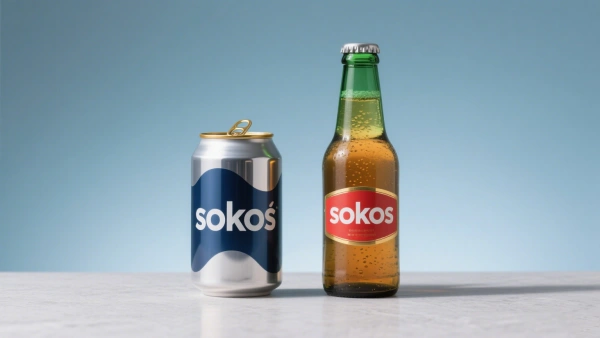Glass bottle beer vs. canned beer
The packaging of beer is a critical decision for breweries, influencing not only the product’s shelf life and taste but also its environmental impact and market appeal. The choice between glass bottles and aluminum cans involves balancing factors like production costs, consumer preferences, and sustainability. This article explores the key differences between glass bottling and canning, focusing on the beer bottling line processes, beer filling machine requirements, and the overall implications for brewers and consumers. We will compare(input-output) efficiency, taste and flavor, shelf life, portability, and chilling speed.

1. Production and Input-Output Efficiency
Glass Bottling Lines
Setting up a glass beer bottling line typically requires a higher initial investment. Glass beer bottling machines often involve complex systems for cleaning, filling, and capping. For instance, a standard beer filling machine for glass bottles might include a rinser, an isobaric filler for carbonated beers, and a capper. Glass bottles are heavier, leading to higher transportation costs and increased carbon emissions. However, glass is inert and does not react with beer, preserving flavor without the need for internal coatings. In markets where deposit return systems (DRS) work efficiently, glass bottles gain an extra edge: they can be collected, recycled, and put back into circulation multiple times, helping brands cut material expenses over the long run.
Canning Lines
Canning lines for beer often boast faster beer filling machine speeds and lower transportation weights. Aluminum cans are lightweight, reducing shipping costs and minimizing breakage during transit. Modern beer bottling machine systems for cans are highly efficient, with some lines capable of filling thousands of cans per hour. The primary environmental drawback lies in the initial production of aluminum, which is energy-intensive due to bauxite mining and processing6. However, aluminum has a high recycling rate, and recycled cans can be turned into new containers efficiently.
2. Taste and Flavor Preservation
Glass Bottles
Glass is impermeable and chemically inert. Because glass remains chemically inert, it safeguards the beer from any unwanted interaction, preserving its authentic flavor and aromatic profile exactly as the brewer envisioned. This is why many craft breweries and high-end beer brands gravitate toward glass packaging to uphold their commitment to pure taste and quality.
Canned Beer
Historically, cans were criticized for potential metallic tastes. However, modern cans feature advanced interior coatings that effectively prevent the beer from contacting the aluminum. When filled properly using advanced beer filling machine technology, canned beer can preserve flavor just as well as glass. It also completely blocks light, protecting against skunking.
3. Shelf Life and Preservation
Both packaging formats, when used with appropriate beer bottling line technology, can provide excellent shelf life by preventing oxygen ingress and maintaining carbonation. The key factor is the effectiveness of the sealing process on the beer filling machine. Glass bottles with crown caps or swing tops can create a perfect seal. Cans are hermetically sealed, offering equally robust protection against oxygen. Both formats effectively shield beer from light, a primary cause of flavor degradation.
4. Portability and Usage Scenarios
Glass Bottles
Glass bottles are often associated with premium experiences and traditional consumption, such as in pubs or homes. They are ideal for situations where breakage is not a concern. However, their weight and susceptibility to breakage render them impractical for high-volume commercial environments such as stadium concessions, music festivals, or airline beverage services, where efficiency, speed, and safety are paramount.
Canned Beer
Cans are lightweight, durable, and not prone to breaking. This makes them overwhelmingly superior in terms of portability and safety for outdoor events, travel, and venues like beaches or stadiums. Their compact shape also allows for more efficient storage and cooling.
5. Chilling Speed
Aluminum’s superior thermal conductivity means canned beer chills significantly faster than glass-bottled beer. This is a notable advantage for consumers seeking a cold beer quickly. The thinner wall of a can compared to a glass bottle accelerates the heat transfer process when placed in ice or a refrigerator.
A Diversified Future for Packaging
The choice between glass and cans is not a simple binary. Glass remains the champion for premium, traditional experiences and is often favored for its flavor preservation and premium image. Cans win on portability, efficiency, and modern appeal, offering faster production, lighter weight, and quicker chilling.
Beer bottling and filling technologies keep advancing, giving brewers flexible ways to serve different markets and occasions. Emerging concepts—like Carlsberg’s glue-based Snap Pack and paper bottles—show how eco-design and practicality are merging. In the end, packaging choices reflect each brewery’s audience, brand vision, and production goals.

